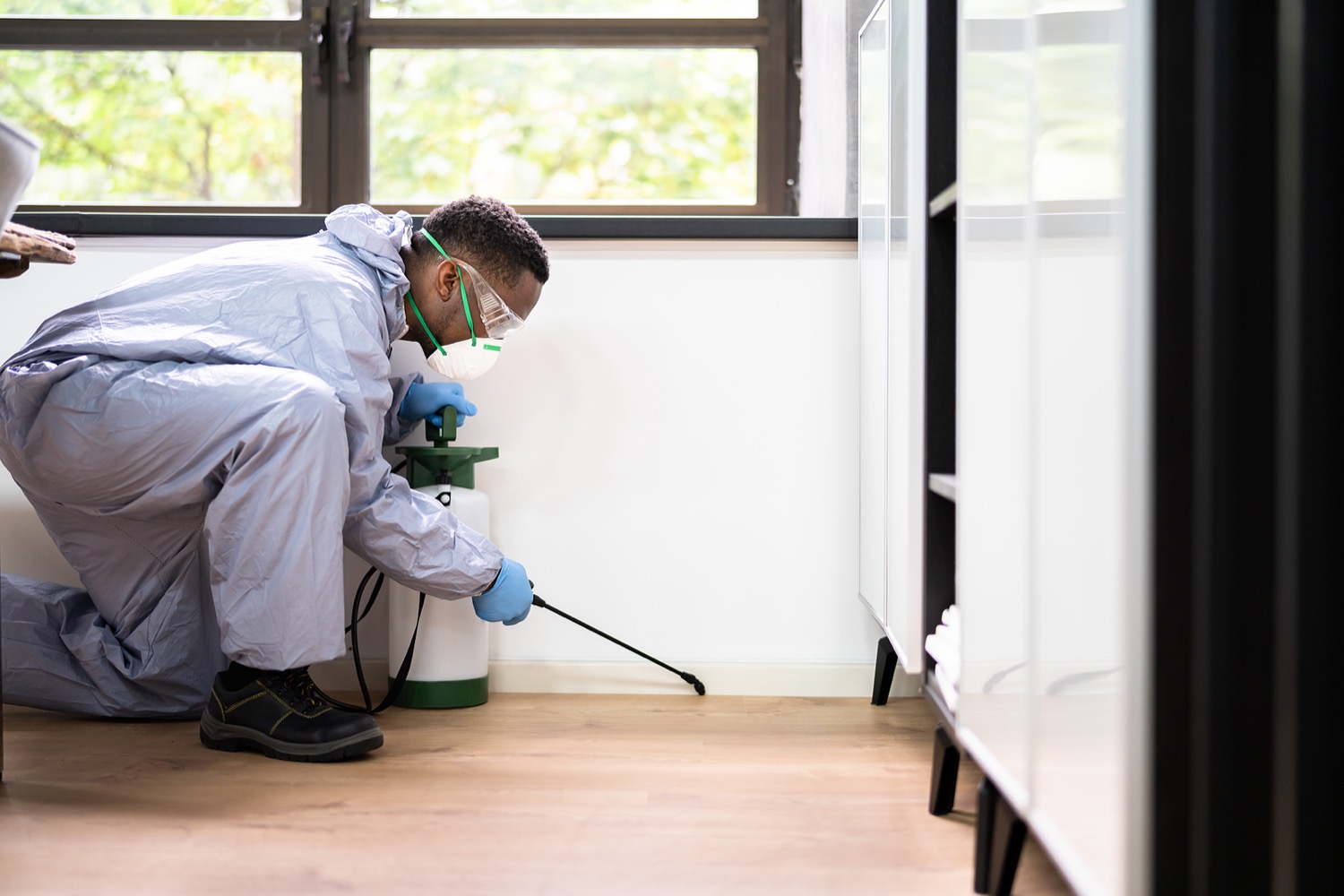A1 Bed Bug Exterminator Charlotte - Specialized Bed Bug Removal
Wiki Article
Bed Insect Treatment Malfunction: Comparing Chemical Vs. Non-Chemical Solutions
In the world of pest control, especially when dealing with the consistent issue of bed bugs, the option between chemical and non-chemical treatment remedies can be a pivotal one. Both strategies use distinct advantages and downsides, influencing aspects such as efficiency, security factors to consider, and general expense. By examining the nuanced details of each technique, a clearer understanding of which path to go after in dealing with a bed pest infestation can be attained.Effectiveness of Chemical Treatments
Chemical therapies for bed insect invasions have actually been extensively recognized for their potent and rapid efficacy in getting rid of these parasites. When thinking about the effectiveness of chemical treatments, it is crucial to recognize that they can supply a detailed and fast option to a bed pest trouble.Furthermore, chemical therapies have the benefit of providing residual effects, indicating that they can continue to eliminate bed bugs also after the first application. This residual action is especially helpful in combating any type of possible re-infestations. In addition, the quick activity of chemical therapies can bring alleviation to individuals facing extreme bed insect problems, permitting them to gain back control of their home quickly.
Safety And Security Interest In Chemical Solutions
One crucial element that needs cautious consideration when making use of chemical services for bed bug therapy is making sure the safety and security of occupants and the atmosphere. Exposure to certain chemicals made use of in bed pest treatments can lead to respiratory problems, skin inflammation, or other negative responses, especially in people with pre-existing problems or level of sensitivities.Furthermore, the environmental effect of chemical solutions is another substantial factor to consider. Some chemicals made use of in bed pest treatments may be dangerous to advantageous bugs, wild animals, and communities if they leach right into the dirt or water systems. It is vital to utilize chemical therapies deliberately, complying with safety and security guidelines, and thinking about less hazardous alternatives to mitigate these threats and make sure the efficient and risk-free administration of bed bug invasions.
Advantages of Non-Chemical Approaches
Thinking about the potential safety and security worries and environmental impact related to chemical options for bed pest treatment, discovering non-chemical approaches provides an encouraging option with several unique benefits. Non-chemical approaches use a more secure option for households, particularly those with kids, family pets, or individuals conscious harsh chemicals. These approaches eliminate the threats of exposure to hazardous substances, minimizing the capacity for unfavorable health and wellness effects. In addition, non-chemical therapies are eco friendly, as they do not add to air or water contamination, making them a lasting option for parasite control.Furthermore, non-chemical options can be efficient in targeting bed bugs, including hard-to-reach areas where chemical therapies might not penetrate. Approaches such as warm therapy, vacuuming, vapor cleansing, and bed mattress encasements give complete removal without using hazardous chemicals. Furthermore, non-chemical techniques can navigate to these guys be much less turbulent, calling for very little prep work and permitting quicker reentry into dealt with locations. In general, going with non-chemical bed insect therapy methods not just focuses on safety and environmental management yet likewise ensures reliable and extensive bug control.
Limitations of Non-Chemical Treatments

Additionally, non-chemical therapies frequently require numerous applications to achieve effective eradication. This can be time-consuming and might not always guarantee total elimination of all bed pests and their eggs, particularly in hard-to-reach or covert areas.
Furthermore, the success of non-chemical treatments heavily relies on correct execution and thoroughness, which can be challenging for people without professional expertise. Inadequate application of non-chemical techniques may cause insufficient eradication, leading to consistent problems and the demand for added treatments.
For that reason, while non-chemical treatments have their advantages, it is crucial to acknowledge these constraints and consider them when identifying one of the most reliable strategy for taking care of bed insect invasions.
Expense Comparison: Chemical Vs. Non-Chemical Options
Offered the restrictions related to non-chemical therapies, an important facet to review in the context of bed bug administration is the expense contrast in between chemical and non-chemical options. Chemical therapies generally entail the application of pesticides by professionals, which can vary from $250 to $900 per space, relying on the severity of the problem and the size of the location to be dealt with. In contrast, non-chemical therapies like heat therapy or steam can be more costly, with expenses ranging from $1,000 to $6,000 for a whole home. While the initial price of chemical therapies may appear lower, multiple therapies may be needed to totally remove the problem, potentially increasing the general cost. On the various other hand, non-chemical choices might supply an extra green and lasting solution, although they can be cost-prohibitive for some people. Inevitably, when taking into consideration the price of bed insect therapy choices, it is crucial to weigh the in advance expenditures against the performance and long-term sustainability of the chosen method.Final Thought

Taking into consideration the prospective safety and security concerns and environmental effect associated with chemical options for bed pest treatment, checking out non-chemical approaches offers an appealing option with numerous distinct advantages.Offered the restrictions linked with non-chemical therapies, an important element to evaluate in the context of bed pest administration is the cost contrast in between chemical and non-chemical options. In comparison, non-chemical treatments like warmth therapy or vapor can be extra expensive, with prices varying from $1,000 to $6,000 for a whole home. While the initial cost of chemical therapies may seem lower, several treatments might be needed to completely get rid of the problem, possibly increasing the total cost.In final thought, when comparing chemical and non-chemical bed insect treatment choices, it is vital to take into consideration efficiency, security, advantages, limitations, and price.
Report this wiki page